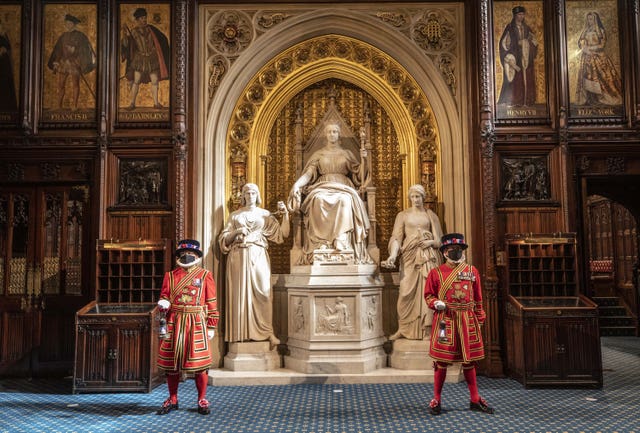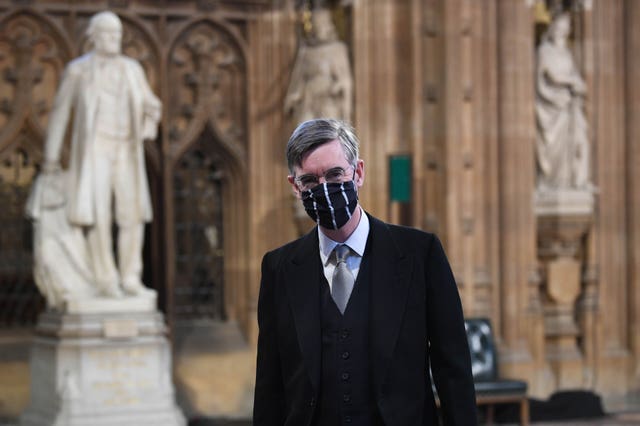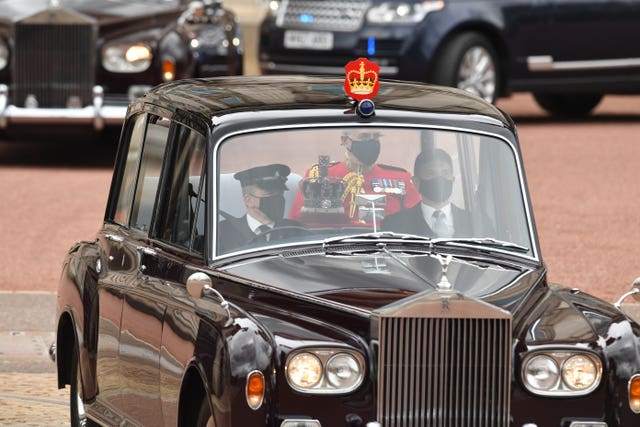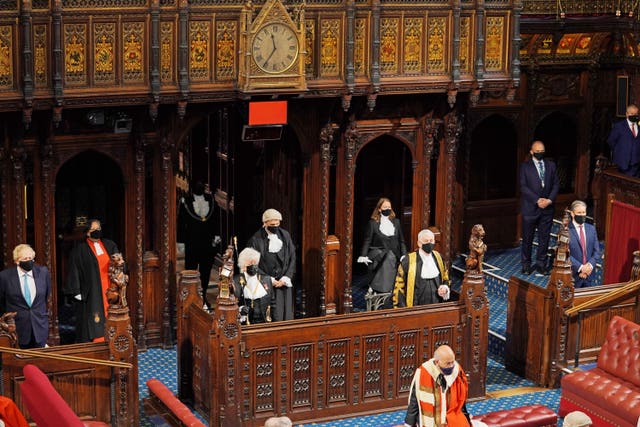Queen’s Speech sets out plans for ‘stronger, healthier, more prosperous’ nation
The Queen set out Prime Minister Boris Johnson’s programme for the next phase of his administration.

Boris Johnson said the Queen’s Speech sets out a plan for “unleashing our nation’s full potential” as the UK recovers from coronavirus.
The Queen set out the Government’s programme in her first major public ceremonial appearance since the death of her husband, the Duke of Edinburgh.
But measures to address the long-standing issue of social care funding were not included in the speech.
Proposals on social care will be brought forward later this year, the Government said – despite Mr Johnson’s promise when he entered No 10 two years ago that he had already prepared a “clear plan” to fix the system.
The Prime Minister said: “We will bring forward proposals to reform adult social care so that every person receives the dignity and security they deserve.”
Also missing was a Bill on dealing with the legacy of the Troubles in Northern Ireland, although Mr Johnson said legislation will be introduced.
Issues around the treatment of veterans of the Troubles have been highly controversial amid suggestions that any protection from prosecution offered to service personnel may also be extended to terrorists.
Mr Johnson said the Government’s legacy package will deliver “better outcomes for victims, survivors and veterans”, focused on reconciliation and ending the “cycle of investigations”.

In his introduction, the Prime Minister said: “We must harness the ingenuity and resolve that has been revealed in the struggle against Covid-19 and use it to create a stronger, healthier and more prosperous nation.
“We have been given an historic opportunity to change things for the better, level up opportunities across the whole of the United Kingdom, and address the problems that have constrained us far too often before.”
Around 30 pieces of legislation promised in the speech include:
– A Health and Care Bill to better integrate the NHS and social care systems.
– A Planning Bill to make it easier to build new homes, schools and hospitals.

– New laws to scrap the Fixed-term Parliaments Act, meaning it will be easier for Mr Johnson to call an early general election before 2024.
– A Counter-State Threats Bill to introduce a US-style register of foreign agents to help counter espionage and influence from hostile governments.
– An Online Safety Bill requiring tech giants to tackle illegal content on their platforms and clearly set out in their terms what content is and is not acceptable.
– The return of the controversial Police, Crime, Sentencing and Courts Bill, which saw demonstrations over concerns that it would curtail the right to protest when it was last before Parliament.
– A Higher Education (Free Speech) Bill giving regulators the power to fine universities or students’ unions in England if they fail to protect freedom of expression.

The Government also promised a “levelling-up White Paper” setting out how Mr Johnson intends to meet the promises made to voters in former Labour-voting areas.
“As the United Kingdom gets back on its feet, we will turbocharge our economic recovery in every part of our country, increasing and spreading opportunity.”
Also promised are measures to ban so-called conversion therapy to protect LGBT communities from “abhorrent practices” which can cause mental and physical harm.
The Prime Minister said the Queen’s Speech will “fulfil our pledge to unite and level up and build back a better Britain”.

The response to coronavirus has shown “deep wells of talent, kindness, ingenuity and resourcefulness” across the country and “the Government’s task is to mobilise that extraordinary spirit, matching talent with opportunity and unleashing our nation’s full potential”.
The usual pomp and ceremony of the State Opening of Parliament was scaled back drastically to reduce the potential for spread of Covid-19, and all attendees had to have a negative test beforehand.
The Prince of Wales and the Duchess of Cornwall joined the Queen at the event, but there were no horse-drawn carriages.
The Queen, in day dress and hat, travelled from Buckingham Palace to the Palace of Westminster by car.





